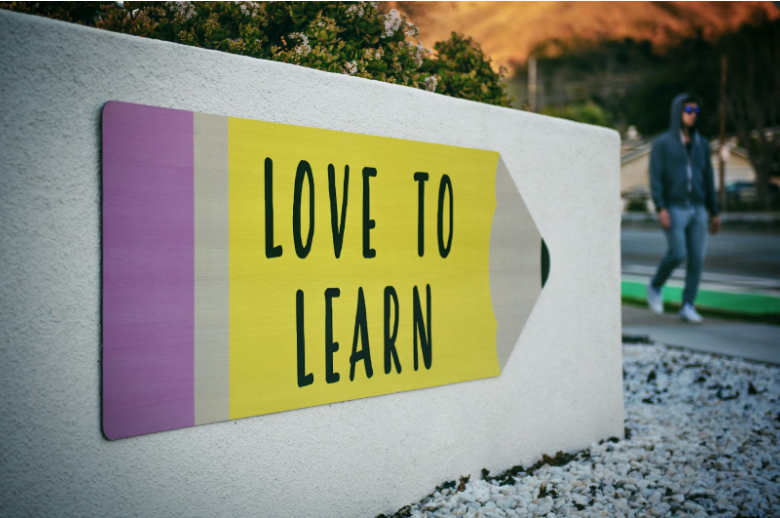From Whiteboard to Algorithm: How Tutors Can Use AI to Boost Student Results

Source: unsplash.com
Teaching Enters Its AI Era
What if your sharpest teaching assistant never slept, adapted to each student instantly, and generated lesson content on demand?
Sounds like a sci-fi dream — but it’s already real.
Artificial Intelligence isn’t just a buzzword anymore; it’s quickly becoming the most powerful tool in a tutor’s arsenal. Whether you’re helping a GCSE student grasp algebra or guiding a young learner through creative writing, AI can enhance how you teach, track progress, and engage students — without losing the human touch that makes your sessions special.
In this article, we’ll explore exactly how you can pair your expertise with intelligent tools to boost student outcomes, save hours of prep time, and bring a little extra magic ✨ to every lesson. From smart story generators to AI-backed progress trackers, we’ll walk you through what’s possible — and how to start today.
Because the best tutors aren’t being replaced by AI.
They’re getting supercharged by it.
Why AI Is the Most Powerful Tool in Your Toolkit
Tutors today are under more pressure than ever. Juggling packed schedules, diverse student needs, and endless prep — it’s no surprise many feel stretched thin. But what if some of those daily demands could be lifted by a tool that never tires and learns with you?
That’s where AI steps in — not as a replacement, but as a silent partner working behind the scenes.
The real magic of AI in education isn’t flashy robots or sci-fi fantasies. It’s in the quiet, practical wins:
- Spotting knowledge gaps before they snowball
- Adapting content based on how each student learns best
- Automating repetitive tasks like quiz creation, feedback, or progress tracking
- Personalising the learning journey at scale
In a world where no two learners are the same, AI makes it possible to offer truly tailored support — without doubling your workload.
It’s already happening in classrooms and tutoring sessions around the world. From tools that instantly summarise complex texts to platforms that generate revision quizzes based on past performance, AI is helping tutors do what they do best — teach with clarity, empathy, and impact.
When used well, AI isn’t just efficient.
It’s transformative.
Dynamic Duo: Human Wisdom + Machine Intelligence
Let’s set the record straight — AI won’t replace great tutors. But it can make great tutors even greater.
Think of it like this: you bring the empathy, intuition, and deep subject knowledge. AI brings the speed, scalability, and tireless data-crunching. Together? You’ve got a teaching force that’s more responsive, efficient, and impactful than ever.
Here’s how it looks in action:
![]() Case 1: Pre-empting Struggles with Predictive Insights
Case 1: Pre-empting Struggles with Predictive Insights
Amir, a maths tutor in Manchester, uses an AI-powered progress tracker that highlights early signs of confusion based on quiz patterns. Instead of waiting for a student to fall behind, he can swoop in early with targeted revision. “It’s like having a sixth sense,” he says. “I know where they’ll struggle before they do.”
![]() Case 2: Personalised Lessons, Fast
Case 2: Personalised Lessons, Fast
Sophie, a language tutor, uses an AI platform that adjusts lesson difficulty in real time. When her student breezes through verb conjugation, the tool seamlessly ups the challenge. “It saves me hours — and my students feel like every session is just right for them.”
![]() Case 3: Teaching Through Interactive Content
Case 3: Teaching Through Interactive Content
Leah teaches primary-age children who struggle with attention. She builds custom stories and quizzes on the fly using AI-based lesson helpers. “We covered planets, spelling, and resilience — all in one magical session. And it only took five minutes to prepare.”
These tools don’t work alone. They shine because tutors know how to use them wisely — wrapping tech in a layer of care, creativity, and real-life teaching instinct.
When AI handles the admin, flags the patterns, or crafts content ideas, you’re free to focus on what matters most: the connection with your student.
So no, AI won’t replace your whiteboard markers —
But it might just hand you a jetpack.
Magic in the Classroom: Real AI in Action
AI in education isn't a future concept — it's already transforming how students learn and how tutors teach. From primary schools to exam prep sessions, artificial intelligence is quietly powering up lessons behind the scenes.
Let’s explore how tutors across different subjects are using AI today — with insights pulled from emerging research and real-life use.
 Maths: Instant Feedback, Smarter Revision
Maths: Instant Feedback, Smarter Revision
Tools like Socratic by Google or Photomath allow students to snap a photo of a maths problem and get step-by-step explanations. But for tutors, AI goes further — platforms now offer diagnostic quizzes that adapt to student performance, flag weak areas, and suggest practice sets.
![]() A 2024 NORC study on AI-enhanced high-dosage tutoring found that students using adaptive AI tools for maths showed significantly higher retention rates and faster progress compared to traditional tutoring methods alone.
A 2024 NORC study on AI-enhanced high-dosage tutoring found that students using adaptive AI tools for maths showed significantly higher retention rates and faster progress compared to traditional tutoring methods alone.
 English & Literacy: Personalised Prompts and Language Insights
English & Literacy: Personalised Prompts and Language Insights
In English tutoring, AI can assist with more than grammar. Platforms like GrammarlyGO and Quill help tutors guide students in improving tone, clarity, and even argument structure. AI can also suggest creative prompts or detect repetitive phrasing in essays — perfect for exam prep.
Tutors are using AI to:
- Generate custom writing prompts based on reading levels
- Offer immediate grammar explanations with context
- Track stylistic improvement over time
 Science & Geography: Making the Abstract Visual
Science & Geography: Making the Abstract Visual
Ever tried explaining photosynthesis to a 9-year-old? AI helps turn complex topics into interactive visuals and simulations, making abstract ideas tangible.
Using tools like Curipod or Khanmigo (by Khan Academy), tutors can:
- Generate real-time diagrams based on student questions
- Simulate experiments or natural phenomena
- Auto-create review games for tricky topics
![]() According to a 2023 ResearchGate paper, AI-powered visual learning significantly improves conceptual understanding in science education, especially for visual learners.
According to a 2023 ResearchGate paper, AI-powered visual learning significantly improves conceptual understanding in science education, especially for visual learners.
 Exam Prep & Progress Tracking: Data-Driven Precision
Exam Prep & Progress Tracking: Data-Driven Precision
AI excels at pattern recognition. That means tutors can now spot subtle trends in student performance — from repeated errors in essays to a drop in confidence mid-topic.
Tools like Century Tech or Edmentum Exact Path are built for tutors who want to:
- Set dynamic learning paths
- Benchmark student progress against national averages
- Auto-adjust question difficulty to match real-time performance
AI isn’t just helping students learn better — it’s helping tutors teach smarter, by unlocking insights that would otherwise take hours to gather.
And the best part? Many of these tools are free or offer educator-friendly plans, making them accessible no matter your budget.
Storytelling That Sticks: Using AI to Spark Imagination and Memory
Ask any seasoned tutor: the lessons students remember most are the ones wrapped in a story.
Whether it’s turning a maths problem into a mystery or explaining gravity through a superhero analogy, storytelling helps abstract ideas come alive. It boosts attention, aids memory, and makes even the driest topics feel personal.
But here’s the challenge: crafting those stories takes time — and not every tutor has an inner novelist.
That’s where AI becomes your creative co-pilot.
✨ Enter the AI Story Generator
Need a quick narrative about photosynthesis? Or a fictional letter from Julius Caesar explaining Roman politics?
The ai story generator lets you turn any topic into a custom, engaging tale — in seconds.
Use it to:
- Create revision-friendly parables (e.g. the “Kingdom of Fractions”)
- Build empathy-based stories around historical or moral themes
- Spark creative writing with tailored prompts
- Turn shy students into co-authors of their own learning adventure
![]() “One of my students used to dread creative writing,” says Ellie, a KS3 tutor in Leeds. “Now we start each session with a 2-minute AI-generated story — and she’s the first to ask for more.”
“One of my students used to dread creative writing,” says Ellie, a KS3 tutor in Leeds. “Now we start each session with a 2-minute AI-generated story — and she’s the first to ask for more.”
It’s not just for younger learners either. For teens, AI-generated narratives can simplify complex topics, simulate debates, or even act as springboards for persuasive writing.
![]() Quick Tip for Tutors:
Quick Tip for Tutors:
Ask your student to choose characters or settings — then let the AI do the heavy lifting. This co-creation approach turns a passive lesson into an interactive journey.
In a world of distraction, stories are how we hold attention.
With AI, you can craft unforgettable ones — without spending hours scripting them.
The Tutor’s Toolkit: Underrated AI Tools That Make a Big Impact
Not all helpful AI tools make the headlines — but many of the best ones are quietly making life easier for tutors every day. Whether you're looking to speed up prep, boost engagement, or track progress more precisely, these under-the-radar tools are worth bookmarking.
Here’s a curated list of AI tools that deserve a spot in your toolkit:
|
Tool |
What It Does |
Best For |
Why It’s Useful |
|
Instantly creates custom educational stories |
Creative writing, literacy, revision through narratives |
Sparks imagination, saves prep time, engages visual/auditory learners |
|
|
Curipod |
Generates interactive lessons and visual aids in minutes |
Primary & secondary tutoring |
Perfect for visual learners, great for explaining abstract concepts |
|
Scribbr AI Proofreader |
Checks academic writing for clarity, structure, and coherence |
GCSE & A-level essay feedback |
Goes beyond grammar to improve reasoning and flow |
|
Diffit |
Converts any content into differentiated learning materials |
SEN students, mixed-ability groups |
Simplifies complex texts and adjusts reading level |
|
TeachMateAI |
AI assistant for teachers/tutors to generate lesson plans, reports, and feedback |
Time-saving content generation |
Tailors outputs to your subject and learner needs |
|
Mindgrasp |
Summarises long articles, videos, and PDFs into digestible notes |
Research tutoring, time-constrained sessions |
Great for A-level/IB students juggling large volumes of content |
|
Classtime |
Formative assessment tool with AI-enhanced feedback |
Tracking understanding over time |
Offers real-time analytics and supports mastery-based learning |
 Pro Tip:
Pro Tip:
Don’t try them all at once. Start with one tool that solves your biggest pain point — whether it’s lesson planning, differentiation, or keeping lessons fresh — and build from there.
These tools don’t require a tech degree. Most are web-based, intuitive, and designed with educators in mind, not engineers. And many offer generous free tiers or educator plans — perfect for private tutors or small teams.
Remember: AI doesn’t have to be flashy to be effective.
Sometimes, the simplest tools make the biggest difference.
The Art of Blending: Keeping Your Voice While Using AI
With all these powerful tools at your fingertips, it’s easy to feel like AI might take over the wheel. But here’s the truth: the best results come when you stay in the driver’s seat.
AI can streamline your work, personalise content, and spot things you might miss — but it can’t replicate your empathy, your judgment, or the subtle ways you adapt to each student in real time.
So how do you strike the right balance between AI assistance and your authentic teaching style?
 1. Use AI for Structure, Not Soul
1. Use AI for Structure, Not Soul
Let AI handle the frameworks — like generating lesson outlines, summaries, or quiz variations. Then add your voice: the tone, examples, and delivery that resonate with your student.
Think of AI as your sous-chef. It preps the ingredients, but you’re still the one doing the cooking.
 2. Review Before You Reuse
2. Review Before You Reuse
AI-generated content can be helpful, but it’s not flawless. Always check:
- Is it accurate for this student’s level?
- Does it match your curriculum or learning goals?
- Would I explain this differently?
Editing and personalising AI outputs keeps your teaching consistent — and trustworthy.
 3. Let Your Students Lead the Clues
3. Let Your Students Lead the Clues
Some students thrive with flashcards and AI quizzes. Others light up when you share a personal story or draw out ideas on paper.
Let AI amplify what’s working rather than forcing a new style. If a student doesn’t respond well to AI-generated materials, don’t be afraid to shift back to traditional methods.
✍️ 4. Don’t Lose the Human Touch
AI might be fast, but it doesn’t high-five students when they finally “get it.” It doesn’t pause a lesson to check in on confidence. And it definitely doesn’t remember that Lucy loves cats and can’t stand word problems.
That’s you. And that’s irreplaceable.
In the end, AI is a powerful teaching assistant —
But your intuition is still the head teacher.

Source: unsplash.com
Ethics, Empathy, and the Human Edge
As AI becomes a more integrated part of tutoring, it's essential to stay grounded in ethics and empathy. These aren’t just buzzwords — they’re the principles that ensure technology enhances learning without undermining trust or independence.
Because while AI offers speed and scale, students still need safety, privacy, and human guidance.
![]() 1. Respect Student Data
1. Respect Student Data
Many AI tools process input data to generate personalised content. That’s incredibly useful — but it comes with responsibility.
Before using any tool:
- Check their privacy policy (especially for tools used with minors)
- Avoid sharing sensitive personal details (names, locations, mental health)
- Opt for tools that allow local or anonymised data usage
![]() Tip: If you’re unsure, treat student data like a password — keep it private, encrypted if possible, and never shared without clear need.
Tip: If you’re unsure, treat student data like a password — keep it private, encrypted if possible, and never shared without clear need.
 2. Don’t Let AI Do All the Thinking
2. Don’t Let AI Do All the Thinking
AI can assist with problem-solving, writing prompts, and feedback — but it should never replace a student’s own thinking process.
If a tool gives the answer too quickly or finishes a full assignment, it’s worth pausing and asking:
- Did this help the student understand, or just shortcut the task?
- Can I use this as a springboard for discussion instead?
Encourage students to challenge, edit, and question AI outputs. That’s how they build critical thinking — a skill no algorithm can hand them.
 3. Stay Transparent with Parents and Students
3. Stay Transparent with Parents and Students
If you’re using AI in lessons, be open about how and why. Most parents will appreciate that you’re using innovative tools — especially if they see better outcomes.
Frame it like this:
“We’re using AI to personalise practice and save time on admin — so I can focus more on your child’s growth.”
Transparency builds trust. And trust builds long-term relationships.
 4. Keep Your Role at the Centre
4. Keep Your Role at the Centre
AI is here to support, not replace. When in doubt, default to human wisdom. You understand nuance, motivation, moods — all the things AI can’t see.
Use AI where it saves time or enhances understanding. But always lead with compassion, curiosity, and your professional judgment.
Technology may be evolving fast —
But good teaching still runs on connection, care, and conscience.
Final Thoughts – The AI-Enhanced Tutor Is Here to Stay
AI isn’t here to take your place — it’s here to amplify your impact.
As a tutor, your superpower lies in empathy, adaptability, and knowing exactly when a student needs encouragement or a change of pace. AI won’t ever replace that. But it can handle the heavy lifting behind the scenes: generating resources, spotting patterns, and helping you personalise lessons like never before.
This isn’t about losing your voice.
It’s about freeing up more time to use it where it matters most.
Whether you're using smart tools to streamline lesson planning, adapt content in real-time, or spot trends you might’ve missed — AI is your co-pilot, not your competitor.
The future of tutoring isn’t automated.
It’s human-led and AI-assisted.
So take that first step: try a tool, run an experiment, ask your students what they think. You might be surprised how natural — and how powerful — this new chapter feels.
✨ Because when you combine heart, skill, and smart tech?
That’s where learning truly accelerates.
Recent Posts
-
How to Use Technology to Boost Student Engagement
How to Use Technology to Boost Student Engagement Students in traditional classroom settings are hav …Sep 16th 2025 -
How Classroom Teachers Can Spot Speech Delays Before They Become Learning Gaps
Every teacher has met the child whose mind races ahead of their words, the student who knows the ans …Aug 29th 2025 -
The Important Things You'll Learn from a Pharmacy Qualification
The journey to becoming a pharmacist is a long and sometimes difficult one, but it is a respectable …Aug 29th 2025


